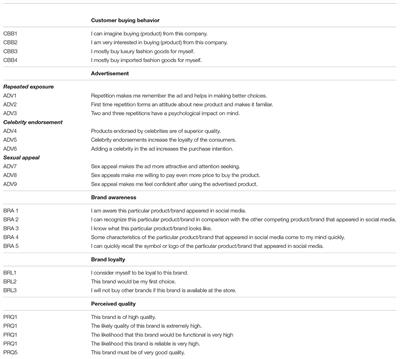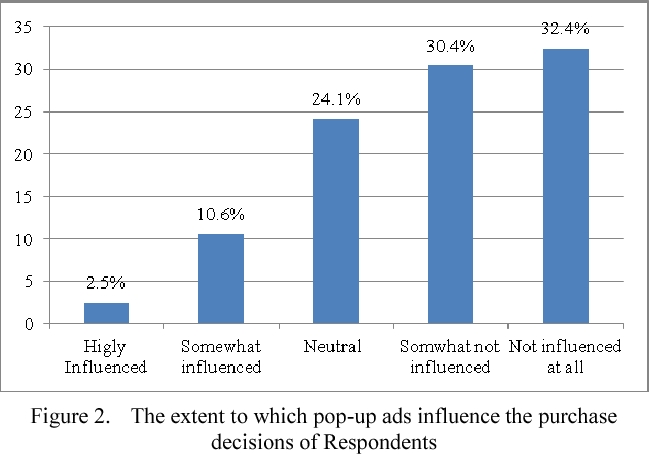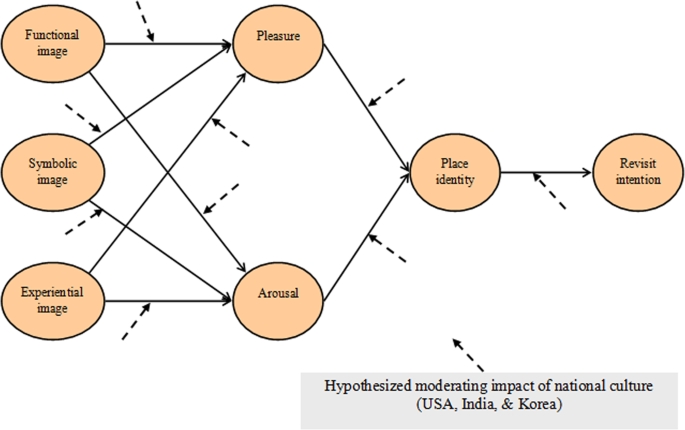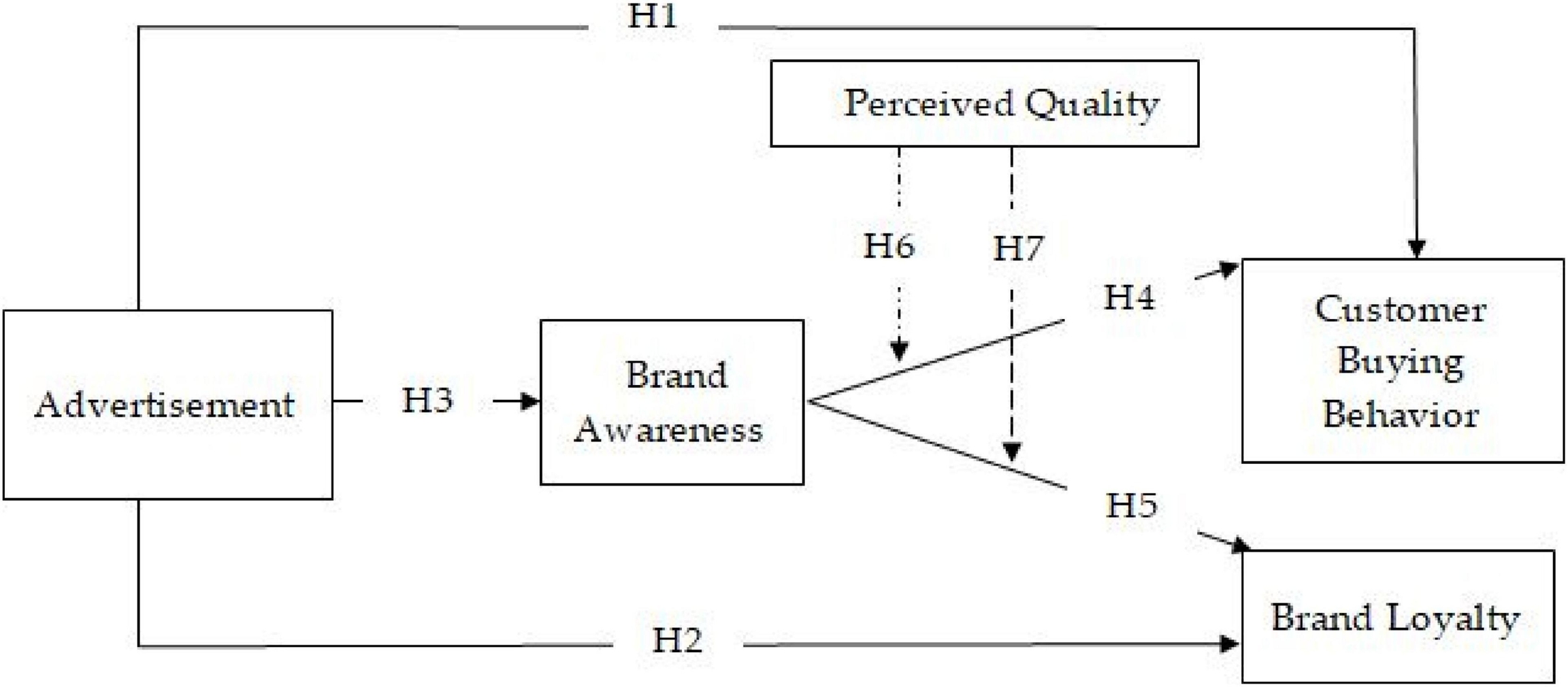Understanding the Influence of Pop Under Advertising on Consumer Behavior and Brand Recognition
Buy CPC Traffic | Buy Display Ads | Exclusive traffic sources | Buy Push Ads | Popunder ADS | Buy Native Ads | Buy Preroll Ads

Buy CPC Traffic | Buy Display Ads | Exclusive traffic sources | Buy Push Ads | Popunder ADS | Buy Native Ads | Buy Preroll Ads
In today's digital age, advertising has taken on many forms in order to captivate and engage consumers. One such form is pop under advertising, which has gained both popularity and criticism in recent years. This form of advertising involves displaying an advertisement in a separate window or tab that appears beneath the active browser window, often while the user is engaged with another website.
The purpose of this article is to delve into the impact of pop under advertising on consumer behavior and brand awareness. With the rise of online advertising, marketers are constantly seeking new methods to capture the attention of consumers and promote their products or services. Pop under advertising has emerged as a prominent strategy in this endeavor, but its effectiveness and potential drawbacks remain under scrutiny.
Research studies have shown that pop under advertising can influence consumer behavior in various ways. Firstly, it has the potential to increase brand awareness by exposing consumers to new products or services that they may not have been actively seeking. This can be particularly effective for niche or lesser-known brands looking to break into the market. Additionally, the intrusive nature of pop under ads can create a sense of urgency or curiosity in consumers, driving them to explore the advertised brand further.
On the other hand, pop under advertising has also faced criticism for its intrusive and disruptive nature. Some consumers find these ads annoying and intrusive, leading to negative perceptions of the brands associated with them. This can potentially harm brand reputation and result in reduced consumer trust. Furthermore, pop under ads can be easily dismissed or closed without being viewed, diminishing their impact and return on investment for advertisers.
In conclusion, pop under advertising is a controversial form of online advertising that has both pros and cons. While it can increase brand awareness and drive consumer behavior, it also has the potential to annoy and alienate users. Marketers should carefully consider the target audience and context in which pop under ads are displayed, taking into account both the potential benefits and drawbacks of this advertising strategy.
The Impact of Pop Under Advertising

Pop under advertising has become a widely used marketing strategy in recent years. This type of advertising involves displaying ads underneath a webpage, which become visible to the user when they close or minimize the page. The goal of pop under advertising is to capture the user's attention and promote brand awareness.
One of the key impacts of pop under advertising is its ability to reach a large audience. By displaying ads on popular websites, advertisers can potentially reach millions of users. This widespread reach increases the likelihood of attracting potential customers and increasing brand exposure.
Furthermore, pop under ads are often considered less intrusive compared to other forms of online advertising, such as pop-up ads. Since pop under ads only become visible after the user has finished their current browsing session, they are less likely to disrupt the user's online experience. This non-intrusive nature can result in a positive user reaction and increase the chances of the user engaging with the ad.
Pop under advertising also has the potential to influence consumer behavior. When users are presented with relevant and compelling ads, they may be more inclined to click on them and explore the brand further. This can lead to increased website traffic, higher conversion rates, and ultimately, improved sales. Additionally, pop under ads can also serve as reminders for users who have already interacted with a brand, prompting them to make a purchase or revisit the website.
Overall, the impact of pop under advertising on consumer behavior and brand awareness is significant. It allows advertisers to reach a large audience, engage users in a non-intrusive manner, and influence their purchasing decisions. As this form of advertising continues to evolve, it will be interesting to see how brands adapt their strategies to maximize the benefits of this unique marketing technique.
Examining Consumer Behavior and Brand Awareness

In today's digital landscape, understanding consumer behavior and increasing brand awareness is critical for businesses to thrive in a competitive marketplace. One of the strategies that has gained popularity is pop under advertising. This form of advertising appears in a new browser window beneath the main browser window, capturing the attention of users without interrupting their browsing experience.
Pop under advertising has the potential to influence consumer behavior in various ways. Firstly, it can create brand awareness by exposing users to a brand or product they may not have been familiar with prior to the pop under ad. This exposure can spark curiosity and drive users to further engage with the brand, leading to increased brand recognition.
Impact on Consumer Behavior

Pop under advertising can also influence consumer behavior by prompting users to take specific actions. For example, a well-designed pop under ad can encourage users to click on a call-to-action button, such as signing up for a newsletter or making a purchase. This type of targeted interaction can lead to higher conversion rates and increased sales for businesses.
Furthermore, pop under ads can serve as reminders for users who have already shown interest in a brand or product. By re-engaging users who may have previously visited a website or abandoned a shopping cart, pop under advertising can nudge them towards completing a conversion, thereby boosting revenue for businesses.
Building Brand Awareness
Another crucial aspect that pop under advertising addresses is brand awareness. By reaching a wide audience through targeted pop under ads, businesses can increase their brand visibility and recognition. The repeated exposure to a brand or product can lead to enhanced brand recall, ensuring that the brand stays top of mind for consumers.
Moreover, pop under ads can be customized to reflect the brand's image and message, allowing for consistent branding across different touchpoints. This consistency helps to establish brand identity and foster a sense of trust and familiarity with consumers.
In conclusion, pop under advertising offers significant potential in influencing consumer behavior and increasing brand awareness. By strategically leveraging this form of advertising, businesses can effectively engage and convert users, ultimately driving business growth and success.
For more information on how pop under advertising can impact consumer behavior and brand awareness, consider exploring rtb advertising to gain valuable insights.
Understanding Consumer Perception
In order to explore the impact of pop under advertising on consumer behavior and brand awareness, it is crucial to understand how consumers perceive and react to these types of advertisements. Consumer perception plays a significant role in determining the effectiveness of advertising strategies and can greatly influence consumer attitudes, beliefs, and purchasing decisions.
Factors influencing consumer perception

Several factors contribute to consumer perception of pop under advertising. One of the primary factors is the context in which the advertisement appears. Consumers are more likely to have a negative perception of pop under ads if they feel that the ads are intrusive or interrupt their browsing experience. On the other hand, if the advertisement appears in a contextually relevant manner, consumers may perceive it as less intrusive and more informative or entertaining.
Another factor that influences consumer perception is the design and content of the advertisement. Pop under ads that have visually appealing designs and relevant content are more likely to capture the attention of consumers and leave a positive impression. However, if the design is cluttered or the content is perceived as misleading or irrelevant, consumers may develop a negative perception and associate the brand with these negative attributes.
The role of consumer attitudes
Consumer attitudes also play a crucial role in their perception of pop under advertising. Consumers who have a generally positive attitude towards online advertising are more likely to perceive pop under ads as acceptable and informative. On the other hand, consumers with negative attitudes towards online advertising may perceive pop under ads as annoying and disruptive.
Additionally, previous experiences with pop under ads can also shape consumer perception. If consumers have had negative experiences with pop under ads in the past, they may develop a bias against them and be more resistant to their influence. On the contrary, if consumers have positive experiences with well-designed and relevant pop under ads, they may have a more favorable perception and be more receptive to future ads of this nature.
In conclusion, understanding consumer perception is crucial in evaluating the impact of pop under advertising on consumer behavior and brand awareness. Factors such as the context, design, and content of the ads, as well as consumer attitudes and previous experiences, significantly influence how consumers perceive and react to these advertisements. By considering these factors, advertisers can better tailor their pop under advertising strategies to positively influence consumer perception and achieve their desired marketing outcomes.
Analyzing the Effects on Brand Awareness

Brand awareness is a key metric to measure the success of advertising campaigns. Understanding the impact of pop under advertising on brand awareness is crucial for marketers and advertisers. Pop under ads have grown in popularity due to their ability to grab consumers' attention without interrupting their browsing experience. In this section, we will analyze how pop under advertising affects brand awareness.
Increased Exposure
Pop under ads are highly effective in increasing brand exposure. When a user visits a website, the ad is triggered to load in a new browser window, underneath the main window. This allows the user to see the ad after they have finished browsing the original website, ensuring that the brand's message is delivered to a highly engaged audience. By being displayed after the user's primary browsing session, pop under ads have a higher chance of capturing the user's attention, leading to increased brand awareness.
Targeted Advertising
Pop under advertising can also have a positive impact on brand awareness through targeted advertising. With advanced targeting options, advertisers can reach their specific target audience based on demographics, interests, and behavior. This ensures that the pop under ads are displayed to users who are more likely to be interested in the brand's products or services. By reaching a highly relevant audience, pop under advertising can significantly improve brand awareness among potential customers.
When utilizing pop under ads for brand awareness, it is important for advertisers to closely monitor the performance of their campaigns. By tracking key metrics such as click-through rates, conversions, and customer engagement, advertisers can gain valuable insights into the effectiveness of their pop under advertising strategies.
In conclusion, pop under advertising has the potential to greatly impact brand awareness. Its ability to provide increased exposure and targeted advertising makes it an effective tool for marketers and advertisers. By leveraging the power of pop under advertising, brands can effectively reach their target audience and enhance their brand awareness.
RTB advertising provides a solution for advertisers looking to incorporate pop under ads into their brand awareness campaigns. Through real-time bidding, advertisers can reach a wide range of publishers and gain access to high-quality inventory. With the ability to target specific demographics and measure campaign performance, RTB advertising offers a comprehensive solution for brands looking to increase their brand awareness.
Factors Influencing Consumer Response

Consumer response to pop under advertising can be influenced by several factors, including:
Ad relevancy: The relevance of the ad to the consumer's interests and needs plays a crucial role in their response. Ads that align with their preferences and desires are more likely to catch their attention and elicit a positive response.
Timing and frequency: The timing and frequency of pop under ads can impact consumer response. Excessive or poorly timed ads can annoy consumers and lead to negative feelings towards the brand. On the other hand, well-timed and strategically placed ads can be more engaging and persuasive.
Message clarity: Clear and concise messages are more likely to grab consumers' attention and communicate the intended information effectively. Confusing or ambiguous messages may fail to convey the desired brand message and result in a less favorable response.
Brand reputation: Consumers' perception of the brand and its reputation can influence their response to pop under ads. Brands with a positive reputation are more likely to be trusted and well-regarded by consumers, increasing the likelihood of a positive response to their ads.
User experience: The overall user experience on the website or platform displaying the pop under ads can impact consumer response. A smooth and user-friendly experience can make consumers more receptive to the ads, while a frustrating or intrusive experience may lead to negative responses.
Personalization: Personalized ads that cater to the specific preferences and interests of individual consumers can have a higher impact and elicit a more positive response. Tailoring ads to match consumer demographics, behavior, or preferences can enhance their relevance and effectiveness.
Understanding these factors can help marketers optimize their pop under advertising strategies and create more effective campaigns that resonate with consumers and improve brand awareness.
Exploring the Role of Targeting in Pop Under Advertising
Targeting plays a crucial role in the effectiveness of pop under advertising. By narrowing down the audience to a specific demographic, marketers can ensure that their ads are reaching the right people at the right time. This increases the chances of capturing the attention of potential consumers and ultimately driving brand awareness.
Relevance to the Audience

One of the key benefits of targeting in pop under advertising is the ability to tailor the ad content to the interests and needs of the audience. By understanding the demographics, interests, and online behaviors of the target audience, marketers can create more relevant and personalized ads. This results in higher engagement and a higher likelihood of converting viewers into customers.
Improving Brand Awareness
Another important aspect of targeting in pop under advertising is its contribution to brand awareness. By specifically targeting individuals who are likely to be interested in the products or services being advertised, marketers can expose their brand to a relevant audience. This helps to build familiarity and recognition, increasing the chances of consumers considering the brand in their decision-making process.
A well-executed targeting strategy in pop under advertising can lead to increased brand recall, a greater likelihood of ad click-throughs, and ultimately, improved brand awareness. The ability to reach a highly targeted audience through pop under ads allows marketers to maximize the impact of their advertising efforts and achieve their marketing goals more effectively.
1. Personalized and relevant ad content
1. Privacy concerns
2. Higher engagement and conversion rates
2. Ad blocker usage
3. Increased brand recognition
3. Finding the right targeting criteria
Overall, targeting plays a crucial role in the success of pop under advertising campaigns. Marketers need to leverage this strategy effectively to ensure their ads reach the right audience and achieve their desired marketing goals.
Measuring the ROI of Pop Under Advertising Campaigns
One of the key factors in evaluating the success of a pop under advertising campaign is measuring the return on investment (ROI) it generates. ROI is a crucial metric that helps marketers determine whether the campaign was cost-effective and delivered the desired outcomes.
To measure the ROI of pop under advertising campaigns, several metrics need to be tracked and analyzed. First and foremost, the total cost of the campaign should be calculated, including expenses such as ad placements, creative production, and any additional fees.
Next, the revenue generated directly from the campaign should be determined. This can be achieved by tracking the number of conversions, such as purchases or sign-ups, that can be attributed to the pop under ads.
Additionally, it is important to consider the indirect impact of pop under advertising on brand awareness and customer behavior. Analyzing the changes in key brand metrics, such as website traffic, search volume, and social media engagement, can provide insights into the overall effectiveness of the campaign.
Furthermore, the lifetime value of the acquired customers should be taken into account, as it is a direct measure of the campaign's impact on long-term profitability. By estimating how much each customer is worth over their entire relationship with the brand, marketers can understand the true value that the pop under advertising campaign brings.
Finally, the ROI can be calculated by subtracting the total campaign cost from the total revenue generated and dividing it by the cost. This will provide a clear percentage that represents the success and profitability of the pop under advertising campaign.
Measuring the ROI of pop under advertising campaigns is essential for marketers to make informed decisions and allocate resources effectively. By analyzing the various metrics and taking into account both direct and indirect impacts, marketers can ensure that their pop under advertising efforts are delivering the desired results and driving brand growth.
Strategies for Effective Pop Under Advertising

Pop under advertising can be a powerful tool for increasing brand awareness and influencing consumer behavior. However, to make the most of this advertising format, it is important to implement effective strategies that maximize its impact. Here are some key strategies for effective pop under advertising:
1. Targeted Audience:
Identify the target audience for your brand or product and ensure that your pop under advertisements are displayed to this specific audience. This will increase the chances of engaging with potential customers who are already interested in your offerings.
2. Compelling Design:
Create visually appealing pop under advertisements that grab the attention of users. Use attractive colors, eye-catching images, and concise, compelling copy to motivate users to interact with your brand.
3. Clear Call-to-Action:
Include a clear and concise call-to-action in your pop under advertisements. Whether it is to visit a website, sign up for a newsletter, or make a purchase, make sure that users know what action you want them to take.
4. Timing and Frequency:
Consider the timing and frequency of your pop under advertisements. Displaying them at strategic moments when users are more likely to be receptive can increase their effectiveness. Additionally, be mindful of not overwhelming users with too many pop under ads, as this can lead to annoyance and a negative perception of your brand.
5. A/B Testing:
Conduct A/B testing to determine the most effective pop under advertising strategies for your brand. Test different designs, offers, and targeting parameters to optimize your campaigns and achieve better results.
6. Tracking and Analytics:
Implement tracking and analytics tools to measure the effectiveness of your pop under advertisements. Monitor key metrics such as click-through rates, conversions, and engagement to assess the impact of your campaigns and make data-driven optimizations.
By implementing these strategies, advertisers can harness the power of pop under advertising to effectively reach their target audience, increase brand awareness, and drive desired consumer behaviors.
What is pop under advertising?
Pop under advertising is a type of online advertising where an ad appears in a separate window or tab behind the current browser window.
How does pop under advertising impact consumer behavior?
Pop under advertising has been found to have a significant impact on consumer behavior, as it can grab attention and increase brand awareness.
Does pop under advertising have any effects on brand awareness?
Yes, pop under advertising has been shown to increase brand awareness among consumers, as it exposes them to the brand's messaging.
Are there any negative effects of pop under advertising on consumer behavior?
While pop under advertising can be effective in grabbing attention, it can also be seen as intrusive and annoying by some consumers, leading to negative brand perceptions.
What are some strategies for using pop under advertising effectively?
Some strategies for using pop under advertising effectively include targeting the right audience, creating compelling and relevant ad content, and carefully timing the appearance of the ads to maximize their impact.
What is pop under advertising?
Pop under advertising is a type of online advertising where an advertisement appears in a new browser window or tab that is opened beneath the currently active window. It is different from pop-up advertising, where the advertisement appears in a new window that is displayed on top of the active window.
How does pop under advertising impact consumer behavior?
Pop under advertising can have various impacts on consumer behavior. Some studies suggest that pop under ads can be annoying and intrusive, leading to negative attitudes towards the brand or product being advertised. On the other hand, pop under ads can also have positive effects, such as increasing brand awareness and recalling the advertised message.
Buy CPC Traffic | Buy Display Ads | Exclusive traffic sources | Buy Push Ads | Popunder ADS | Buy Native Ads | Buy Preroll Ads
2022-2024 @ Exploring the Impact of Pop Under Advertising on Consumer Behavior and Brand Awareness